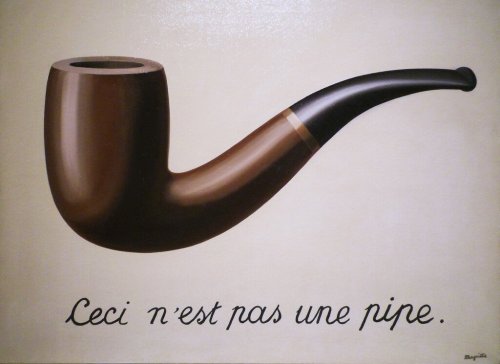The Semiotic Function: Definition and Development

The semiotic function is the ability to create representations. It’s based on the use of signs and symbols that have distinct signifieds and signifiers. But how does it actually work?
A great example of the semiotic function that can help you understand it better is a painting by the famous French painter, Magritte. He painted a pipe and wrote the words “Ceci n’est pas une pipe” (this is not a pipe) below it. He wanted to make it clear that although the painting certainly evoked a pipe, it wasn’t actually a pipe. It is, in this case, a symbolic representation of a pipe.
In this example, Magritte used the semiotic function to make art. However, human beings use symbolic representations every day. In this article, we’re going to talk about the different representations that exist according to the relationship between their signifier and their signified (meaning).

Components of representation
Representations play an important role in our lives. You constantly use signs and symbols that help you to plan, communicate, and orient your actions. They allow us to mentally interact with something without having to experience it in real life.
Each representation has two elements: a signifier and a signified. The former refers to the physical component of the representation. For example, the letters that form a word or the paint strokes that form an image. The signified, on the other hand, is the image that forms in your brain when you see that particular symbol.
The use of representations opens up a world of possibilities for psychological development. It allows the subject to distance themselves from the present situation and experience different places in time and space. It even gives human beings the ability to create fictional worlds that only exist in our minds.
Types of representation
Ferdinand de Saussure classified representations into three distinct types. The difference between them lies in the degree of connection between the signified and the signifier:
- Index/indexical: In this case, the signified is directly connected to the signifier. One example would be seeing food scraps on your kitchen floor and inferring that you have mice. The food scraps, in this case, would be the index.
- Icon/iconic: In this case, the signifier is completely independent of the signified. Nevertheless, there’s a relationship between the two. Drawings, paintings, and photographs are symbols of what they represent. For example, a painting of a pipe isn’t the object itself, but there is a strong relationship between the two. These types of representations appear in a more indirect way during “symbolic play.” One example of symbolic play is a child using a stick as if it were a sword.
- Symbol/symbolic: Representations are called symbols when the signifier is completely arbitrary. The relationship between the two elements is established by a long historical-social process. Consequently, someone outside this particular context would not be able to interpret the symbol. The most obvious example is language. For example, the letters of the word “computer” have no relationship with what they represent, but they still evoke that image in your mind.

Manifestation of the semiotic function
The ability to create representations becomes clearer during the last phases of the sensorimotor stage of human development. However, the semiotic function doesn’t develop suddenly. Little by little, children learn to use more representations and more semiotic behavior.
Starting during this stage, you see many examples of the semiotic function in children’s behavior:
- Deferred imitation. This is when a child observes an action, and then imitates that action at a later point in time. This behavior is a precursor to being able to create representations because it is an imitation of an action, not a thought.
- Symbolic play. This is a typical and well-recognized activity during childhood. Children engaged in symbolic play use objects as if they were other things. Sticks become swords, stones and pebbles become ingredients in a soup. Children displaying this behavior are making use of the semiotic function.
- Drawing. Another early sign of the ability to make representations is drawing. It’s important to know that this activity is so much more than a child simply copying what they see around them. When a child draws, they’re making a representation of an internal image. Consequently, the drawing that the child produces tends to represent what the child knows about the object, not what they see.
- Language. When a child starts to speak, you can see how they learn to use arbitrary symbols. They know how to completely separate the signifier from the signified.
The semiotic function and human history
In conclusion, it’s safe to say that the semiotic function is one of the most important human abilities. Thanks to the semiotic function, we’ve been able to communicate in such a way that we created a culture that facilitated the survival and advancement of our species.
As a result, studying and researching the semiotic function has helped us better understand the impact that this ability has on our lives.
This text is provided for informational purposes only and does not replace consultation with a professional. If in doubt, consult your specialist.








